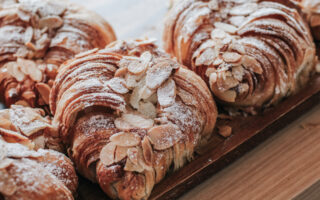Gaillac Wines – Wines of The Tarn Department
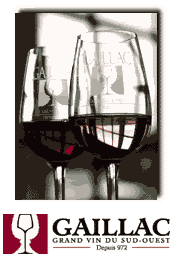
Try One Of The Oldest Wines in France
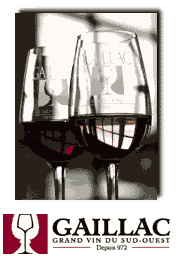
The Gaillac Appellation area covers 2.500 hectares spread over 73 communes, for an AOC production of over 165.000 hectolitres. Today, the appellation comprises of one hundred independent producers and 3 co-operative cellars.
HISTORY
The vineyard of Gaillac was one of the first growing centres in Gaul. Gaillac – the name means “fertile place”- went through various hardships: wars, plague and finally phylloxera. So much that by the beginning of the 20th century, the wine of Gaillac had a minor position in the wine industry.
In 1970, the people reacted and created wine co-operatives that saved the wine production in that area. The white wines of Gaillac obtained an AOC in 1938. The AOC status was extended to cover the distinctive red and rosé wines in 1970.
THE GAILLAC REGION
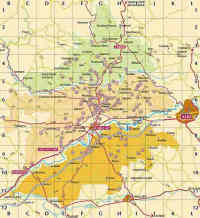
Right Bank
The right bank area is bordered by the river Vère. This vast area spreads east to west from Castelnau-de-Lévis to Rabastens, through Labastide-de-Lévis, Gaillac or Lisle-sur-Tarn.
The clayey-calcareous soils, and being quite high in altitude with late ripening, produces fruity whites and subtle reds.
Left Bank
The left bank area spreads over 30 kms. between Florentin and Couffouleux, going through Tecou, Montans (an archaeological site) or Peyrole.
Being quite low in altitude where the soils are gravelly, has always been ideal for producing dense and deep red wines.
Plateau Cordais
The Plateau Cordais, spreads over the northern part of the Gaillac vineyard.
The vines planted are over clayey-calcareous soils with high content in active limestone. It produces the whole range of Gaillac wines but, due to its situation, is a major producer of white wines.
TYPES OF GAILLAC (ALL AOC)
Gaillac Blanc Sec (Dry white Gaillac)
![]() The white wines must contain minimum percentages of Len de l’El or Sauvignon grapes , or a blend of the two. It may also contain Mauzac, Mauzac Rose, Muscadelle, Ondenc and Semillon grapes. Its color is typically pale yellow with hints of green. Its aromas are of pears, apples and sometimes honey.
The white wines must contain minimum percentages of Len de l’El or Sauvignon grapes , or a blend of the two. It may also contain Mauzac, Mauzac Rose, Muscadelle, Ondenc and Semillon grapes. Its color is typically pale yellow with hints of green. Its aromas are of pears, apples and sometimes honey.
Gaillac Fraîcheur Perlée (Pearled freshness Gaillac)
![]() This is a slightly sparkling white wine with very fine bubbles or pearls from the second fermentation .
This is a slightly sparkling white wine with very fine bubbles or pearls from the second fermentation .
Gaillac Doux (Sweet Gaillac)
![]() These naturally sweet wines must contain a minimum amount of residual sugar per liter. The permitted grape varieties are the same as for the dry white wines. They have a range of sweetness and typically have a flavor of ripe peach.
These naturally sweet wines must contain a minimum amount of residual sugar per liter. The permitted grape varieties are the same as for the dry white wines. They have a range of sweetness and typically have a flavor of ripe peach.
Gaillac Mousseux (Sparkling Gaillac)
![]() These sparkling wines are made by either the “Gaillacoise Method ” or ” Champenoise Method “. The Gaillacoise method is a single fermentation, with no addition of sugar. The sweetness comes solely from the grapes. After several months, the residual natural sugar starts to re-ferment and this produces the bubbles. The wine can be dry or semi-dry.
These sparkling wines are made by either the “Gaillacoise Method ” or ” Champenoise Method “. The Gaillacoise method is a single fermentation, with no addition of sugar. The sweetness comes solely from the grapes. After several months, the residual natural sugar starts to re-ferment and this produces the bubbles. The wine can be dry or semi-dry.
Gaillac Rouge (Red Gaillac)
![]() The red wines must be made from set minimum percentages of Duras, Fer Servadou or Syrah grapes. Each grower will use their own choice of other varieties to blend. The red wines typically have a deep colour and a powerful nose, with tones of red fruit and hints of spices.
The red wines must be made from set minimum percentages of Duras, Fer Servadou or Syrah grapes. Each grower will use their own choice of other varieties to blend. The red wines typically have a deep colour and a powerful nose, with tones of red fruit and hints of spices.
Gaillac Primeur (Early harvest Gaillac)
![]() Under the AOC rules, the Primeur may be sold from the third Thursday of November following the harvest. Made from the Gamay grape, it is a wonderfully fruity, easy to drink young wine.
Under the AOC rules, the Primeur may be sold from the third Thursday of November following the harvest. Made from the Gamay grape, it is a wonderfully fruity, easy to drink young wine.
Gaillac Rosé (Pink Gaillac)
![]() The wine grapes used are the same as for the red wines. The rosés are typically light, fresh, easy-drinking dry wines.
The wine grapes used are the same as for the red wines. The rosés are typically light, fresh, easy-drinking dry wines.
GRAPES VARIETIES FOR THE WINES OF GAILLAC
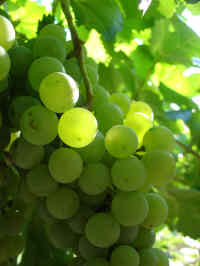
For white wines, the traditional Mauzac is used to produce dry, sweet and sparkling wines. The Len de l’El (” or corner of the eye”) is an ancient variety used to produce white wines with very heady aromas, floral but fresh and supple.
For the red wines : Duras is one of the oldest varieties – revived around twenty years ago, which gives a deep colour, body and finesse. The Braucol (or Fer Servadou) is a typical Gaillac variety which produces highly coloured, full-bodied, rustic reds with aromas of cassis, raspberry and pepper.
FOODS TO EAT WITH GAILLIC WINES
Many of the grapes used in Gaillac wines are among the most ancient in Europe. They give Gaillac wine a very different taste to the wines of its neighbours, Burgundy to the north-east and Languedoc to the east and south. The wines are fruitier, softer, and deliciously easy to drink. The Whites go eminently well with seafood, bouibaise, chicken, pheasant, quail, turkey and cheeses. The reds are excellent with the spicier dishes of the south of France and Italy, for example, pasta, poule provencal and ragous of light meats and game.
© FrenchEntrée Tarn & Aveyron
Share to: Facebook Twitter LinkedIn Email
More in aveyron, food, history, people, recipe, river, tarn, wine
By David Bolton
Leave a reply
Your email address will not be published. Required fields are marked *



